Written by Andreas Roessler | March 24, 2021


The first two parts of this dynamic spectrum sharing blog focused on a specific deployment strategy that combines multimedia broadcast multicast service single frequency network (MBSFN) and rate matching to explain dynamic spectrum sharing fundamentals. Part 1 explained how DSS requires configuration of MBSFN subframes to transmit signal components essential for initial synchronization and configuring signals for high precision tracking of time and frequency. The necessary signals include the synchronization signal block (SSB) and channel state information reference signals (CSI-RS), which must be configured as tracking signals. The 20 ms and 40 ms signal default periodicities require a minimum MBSFN pattern. In the example, the MBSFN takes up 3 out of the 40 subframes, minimizing its impact on LTE capacity. However, providing substantial 5G NR capacity requires rate matching techniques when sharing spectrum. Nonetheless, DSS also uses other deployment strategies, where more subframes are configured for the MBSFN and no rate matching is applied. The strategy to be implemented depends on the DSS philosophy of the network equipment vendor.
Test and measurement gear needs to cope with these various DSS deployment strategies. A typical mobile network testing solution involves a sensitive receiver (network scanner) which is controlled by drive test software that collects measurement results from this passive probe for signal quality measurements. A mobile device rounds off the setup and performs end-to-end measurements, connecting to the network and executing data throughput tests during the driving test. Information is collected from the scanner and device, while related information is compared and correlated to evaluate overall network performance. This setup is also essential for testing DSS to validate LTE and 5G NR performance. The first step is determining whether DSS is active in the network.
How to determine if DSS is active?
All DSS deployment strategies that use MBSFN have the LTE network broadcast MBSFN configurations in system information block 2 (SIB2) [Figure 1]. Once the information is properly received and decoded, LTE device will adjust to ignore the MBSFN subframes. If the information is missing, the device will assume that LTE cell-specific reference signals for determining received signal quality are present in those subframes. When they are not present, the mandated signal quality measurements will be incorrect, which in the worst case can lead to a wrong decision by the network in terms of mobility (handovers). Lab testing LTE-only devices is a vital first step to check and make sure terminals still work properly with active MBSFN. A network scanner must automatically detect and demodulate system information blocks in an LTE network and use the decoded information to adjust scanning capacity as a mobile device does. This is exactly what R&S®TSMx6 scanners can do.


Figure 1: SIB Type 2 with MBSFN configuration
However, simply identifying the MBSFN configuration does not mean DSS is activated in this radio cell. Originally, MBSFN was part of the enhanced multimedia broadcast multicast services (eMBMS) feature enabling the broadcast of content via the LTE network and make transmission of identical content to multiple devices at the same time more efficient. 3GPP Release 9 introduced system information block type 13 (SIB 13), which provides any eMBMS-capable device with additional information for accessing broadcast content. Suppose a specific radio cell transmits SIB2 with an MBSFN configuration but does not schedule the SIB13 transmission, the resulting assumption is that this MBSFN configuration is not for content delivery but is being used for other purposes, e.g. for DSS deployment. Ultimately the network scanner must scan for both system information blocks to increase the likelihood that DSS is active in the radio cell. A simple check box activates this function in R&S®TSMx6 scanners [Figure 2].

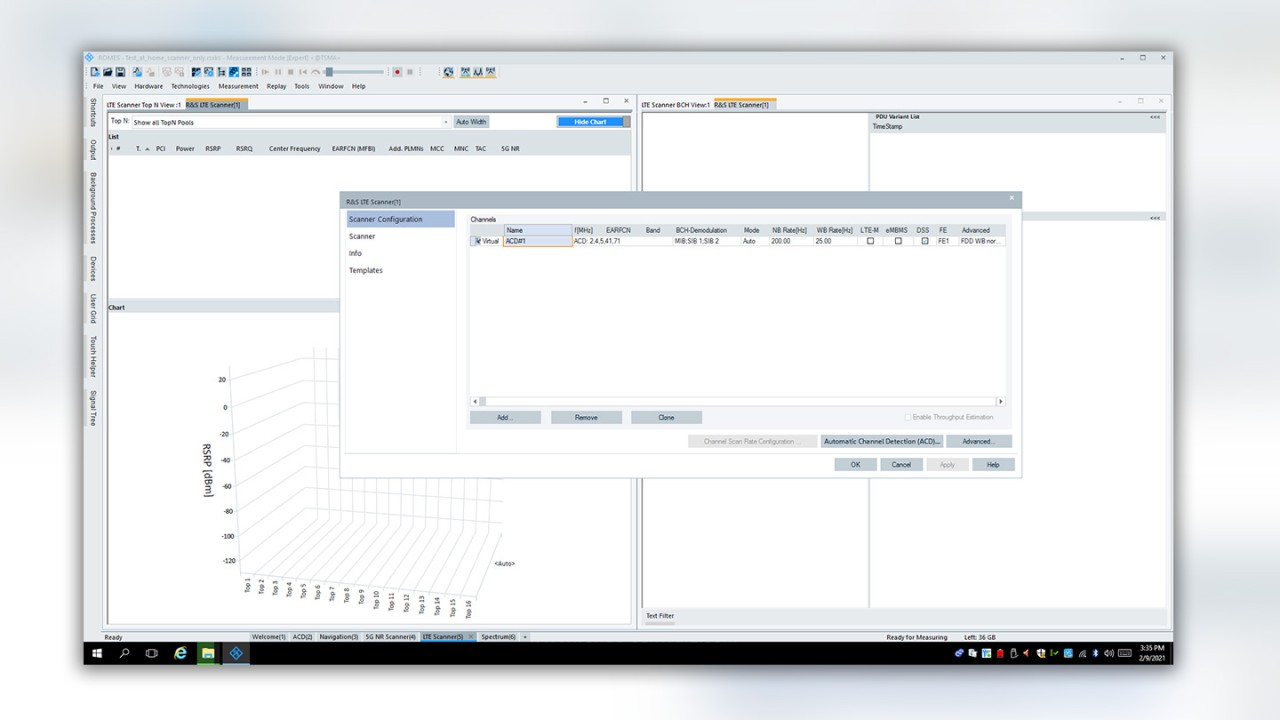
Figure 2: Automatic channel detection (ACD) configuration
The final step is scanning the frequency band used to transmit the SIB for the presence of a 5G New Radio carrier that shares this frequency band with LTE. Current state-of-the-art network scanners do this autonomously. At Rohde & Schwarz the feature is called automatic channel detection (ACD) and is convenient when the receiver is measuring not only coverage for the network operators own spectrum licenses but for its competitors as well [Figure 3]. Any network scanner scans for 5G NR synchronization signal blocks to determine whether a carrier is present in a specific frequency band. The same applies to DSS. A scanner must also detect any SSB transmissions in the MBSFN subframes.

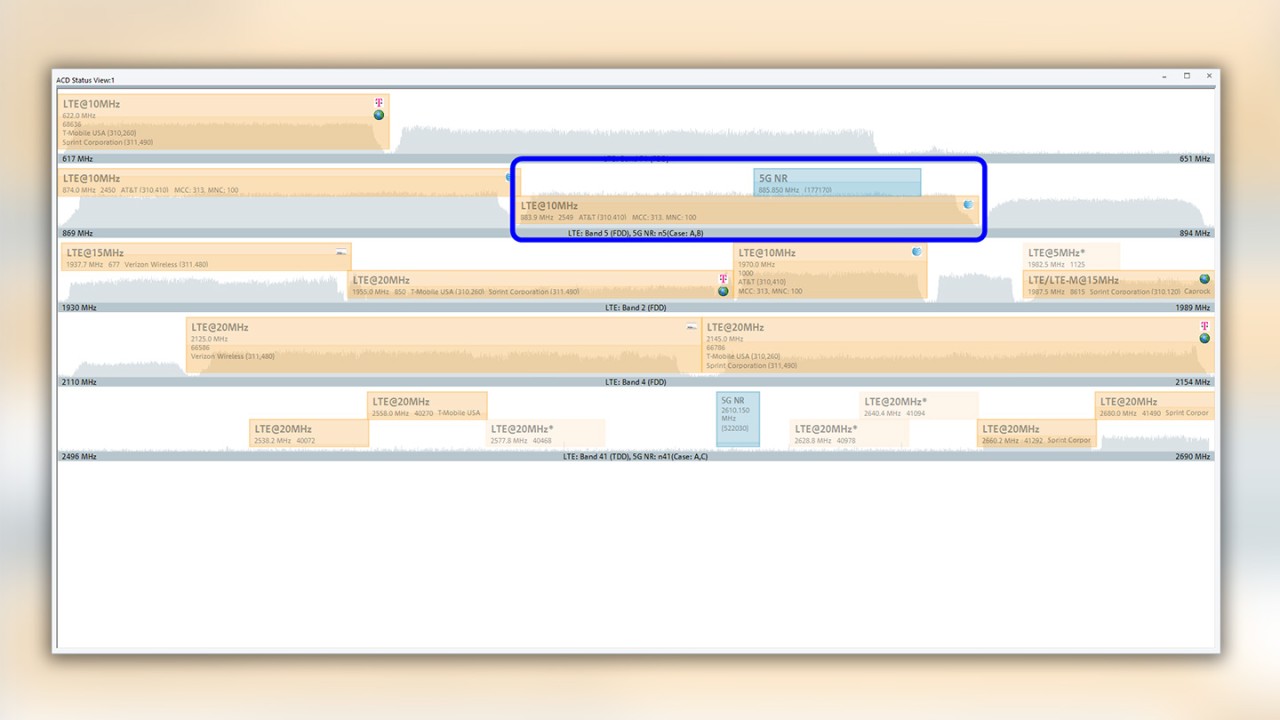
Figure 3: Automatic channel detection (ACD) reveals 5G NR carriers present and sharing spectrum with LTE band 5
Once the scanner detects the 5G NR SSB, it can demodulate and decode the master information block (MIB) on the physical broadcast channel (PBCH). The MIB provides essential system information to the 5G device during initial synchronization. The demodulation reference signal position for 5G NR physical data shared channel (PDSCH DMRS) is relevant when determining if DSS is active in a radio cell, should the underlying DSS deployment strategy use a combination of MBSFN and rate matching. In line with 3GPP, the first symbol carrying the DMRS must be either symbol #2 or #3 [Figure 4]. The latter is required to enable rate matching around LTE CRS as explained in part 2 of this blog post. Mapping the first DMRS to symbol #3 allows the network to map the additional DMRS to symbol #12 instead of symbol #11. Adapting the DMRS mapping principle in this way avoids the LTE CRS transmissions that are present in symbol 11.

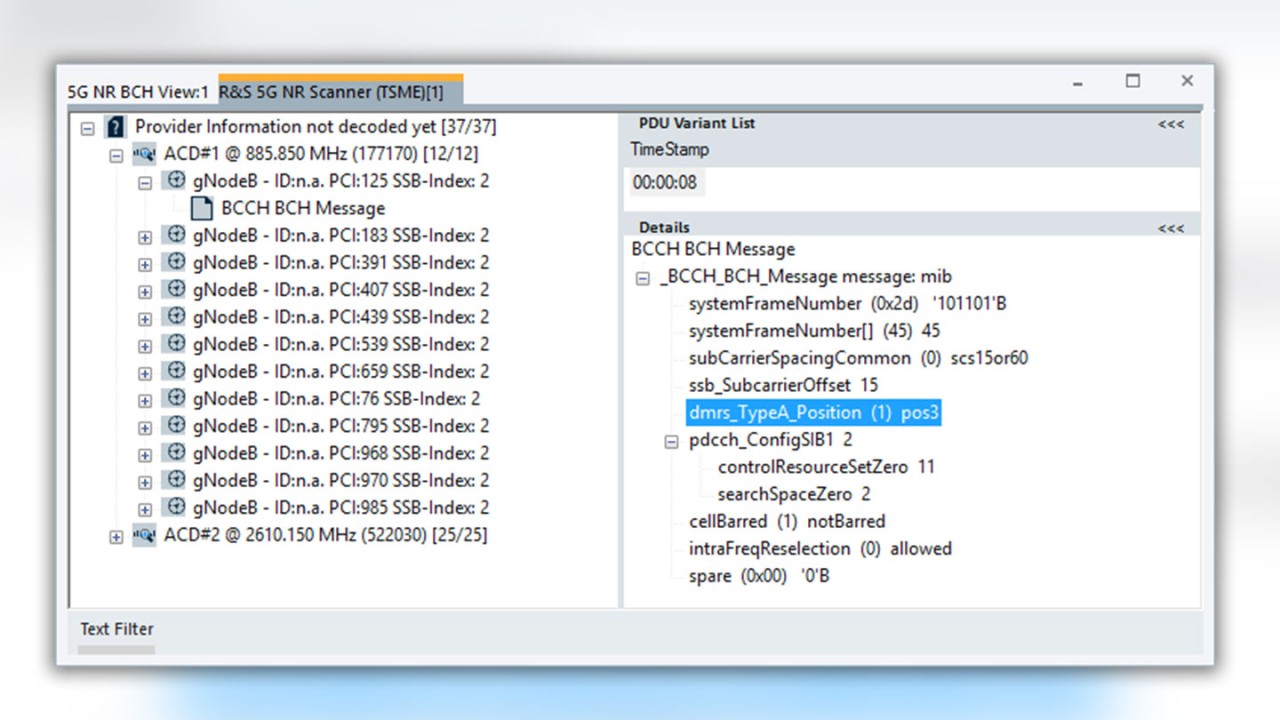
Figure 4: 5G NR Master Information Block (MIB) decoded
From the perspective of a scanner, the flowchart in Figure 5 describes steps for determining DSS activation using only a passive receiver and no mobile device, which would provide access to additional information. This is explained below.

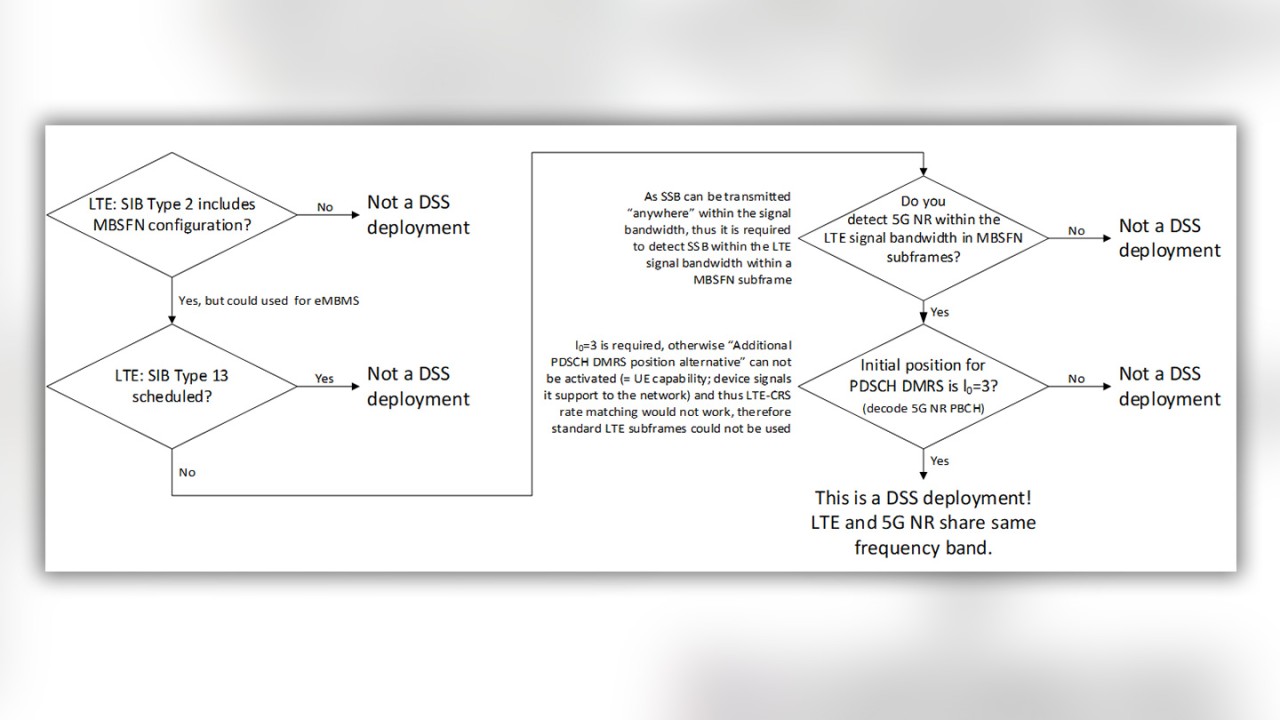
Figure 5: Flow chart for detecting DSS deployment using scanner only
Mapping the first DMRS symbol indicates to a device that DSS might be active in a radio cell. However, the device must support the required function. Two parameters are exchanged as part of the user equipment (UE) capability transfer procedure when a device first registers with the network and informs the network that the device supports spectrum sharing between 4G LTE and 5G NR. The first indicator is that the device supports the alternative DMRS position, and the second is that it supports rate matching around the LTE CRS. The Rohde & Schwarz QualiPoc Android premium handheld troubleshooter application supports all the latest 5G smartphone models that use Qualcomm or Samsung chipsets and conveniently displays information when supported by the device. The left screenshot in Figure 6 highlights the relevant information in blue.

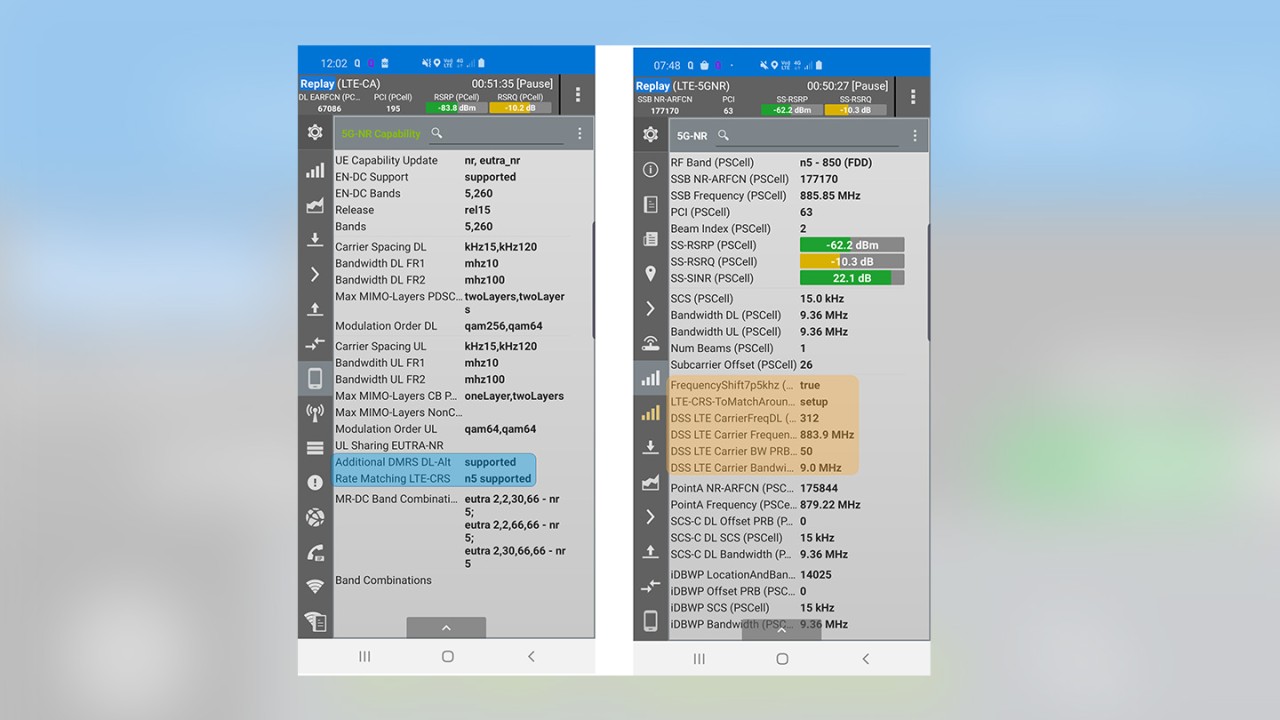
Figure 6: DSS parameter support display in QualiPoc Android premium handheld troubleshooter
Additional information for DSS becomes available, once a connection is established. For example, the network signals the 5G device to shift the uplink transmission by 7.5 kHz. LTE uses 15 kHz subcarrier spacing as does 5G NR when they first share spectrum. The LTE multiple access scheme during uplink is SC-FDMA, which applies a 7.5 kHz shift to avoid the DC subcarrier. The 5G NR default transmission scheme is OFDMA in the uplink, and the DC subcarrier handling is left up to implementation. 5G NR must apply a frequency shift of 7.5 kHz in the uplink to avoid generating interference while sharing spectrum with other LTE devices [Figure 7]. The QualiPoc application indicates that a frequency shift is 'true' once indicated by the network. The information is displayed in Figure 6 and highlighted in orange.


Figure 7: Applying 7.5 kHz shift to 5G NR due to Dynamic Spectrum Sharing (DSS)
As shown in Figure 6, additional information indicates that DSS is active when the device shifts to a connected state. Here, QualiPoc indicates that the device has received the LTE-CRS rate matching pattern, carrier frequency information and actual bandwidth that LTE and 5G NR are sharing.
The final part of this DSS blog series discusses real-world measurement samples from an LTE and 5G network with active dynamic spectrum sharing. A network scanner and 5G mobile device provide valuable insight into DSS performance in commercial networks.
Read more about dynamic spectrum sharing in our article series:
DSS: 5G NR-LTE coexistence through dynamic spectrum sharing (part 1)
DSS: Enabling 5G NR in standard LTE subframes (part 2)
Measurement examples of live 5G mobile networks that support DSS (part 4)






